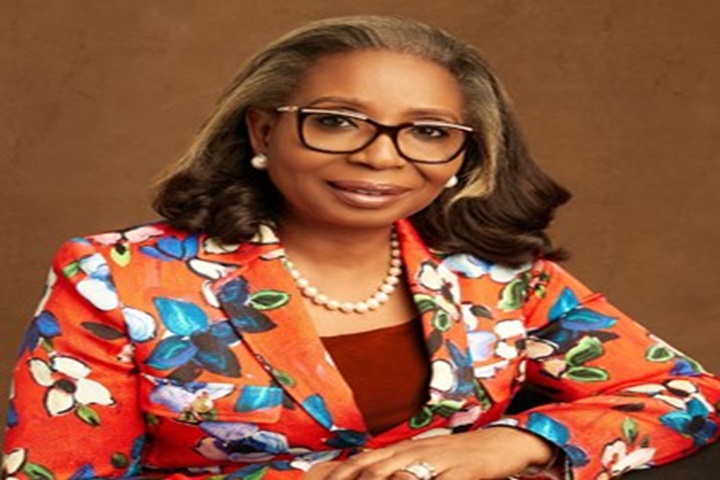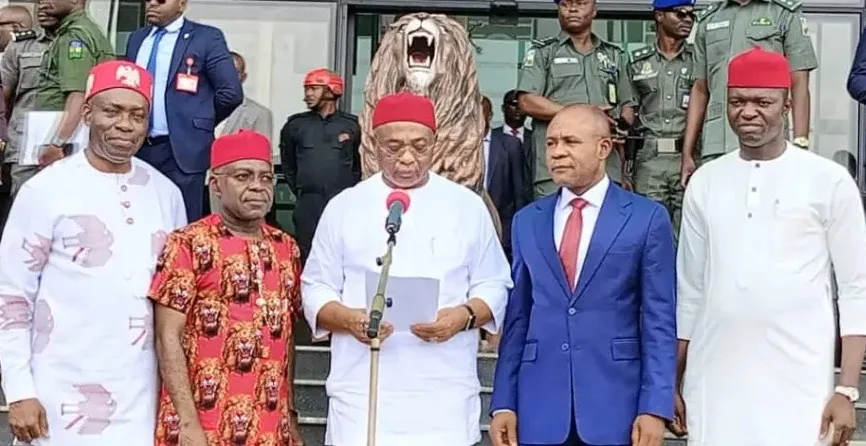Africa
Guinea: “56 dead” in stampede during football game

A stampede following a fan altercation at a football game has left at least 56 people dead in the city of Nzerekore, Guinea.
According the source, the incident took place at a local competition final in Nzerekore on Sunday afternoon.
In response to the referee’s penalty call, rival supporters stormed the field.
Police used tear gas in an attempt to quell the disturbance, and the stampede followed.
Videos purporting to be from the stadium show individuals trying to flee by sprinting and jumping the tall fence.
While the injured are being helped, some footage shows a large number of victims on the hospital floor.
A government press release on Monday stated that 56 people had perished and numerous more had been injured in the stampede, according to Guineenews.
The newspaper claimed that the administration promised to provide all necessary care for the injured.
According to the press statement, an inquiry has been launched to identify the incident’s perpetrators.
The nation’s prime minister, Amadou Oury Bah, calls for composure in a tweet posted on his X account “so that hospital services are not hindered in providing first aid to the injured”.
“The regional authorities are working to restore calm and serenity among the population.
“The government is monitoring the development of the situation and reiterates its call for calm so that hospital services are not hindered in providing first aid to the injured”, the tweet reads.
“The moral authorities of the city are requested to also contribute to the restoration of social tranquility”.
More about Guinea
Guinea is a West African country with a rich history, diverse culture, and breathtaking natural beauty.
The country is located on the Atlantic coast, Guinea shares borders with Guinea-Bissau, Senegal, Mali, Côte d’Ivoire, Liberia, and Sierra Leone.
Geography and Climate of Guinea
Guinea is divided into four main regions: the coastal lowlands, the mountainous Fouta Djallon region, the savannas of Upper Guinea, and the forested regions of Guinea.
The country’s terrain is characterized by mountains, hills, and valleys, with the highest peak being Mount Nimba, which reaches an elevation of 1,752 meters.
Guinea has a tropical climate, with temperatures ranging from 20°C to 30°C.
The country experiences two main seasons: the dry season, which runs from December to May, and the rainy season, which runs from June to November.
History and Culture
Guinea has a long and storied history, with evidence of human habitation dating back to the Paleolithic era.
The country was a major center of trade and commerce in the ancient world, with the Ghana Empire and the Mali Empire both having a significant presence in the region.
In the 19th century, Guinea became a French colony, and it remained under French rule until it gained independence in 1958.
Since then, the country has experienced periods of stability and instability, with the current government being established in 2010.
Guinean culture is a rich and diverse blend of African, European, and Islamic influences.
The country has over 20 ethnic groups, each with their own language, customs, and traditions.
Music and dance play an important role in Guinean culture, with the country being home to a number of famous musicians and dancers.
Economy
According to reports, Guinea is richly endowed with natural resources, including iron ore, bauxite, diamonds, gold, and uranium.
The country’s economy is largely dependent on agriculture.
It has major crops including rice, cassava, and bananas.
In recent years, Guinea has experienced significant economic growth.
This is reported to be driven by investments in the mining sector and infrastructure development.
However, the country still faces significant development challenges.
Such challenges include poverty, inequality, and limited access to education and healthcare.
Tourism
Guinea is a hidden gem for tourists, with a number of attractions and activities to explore.
Some of the top tourist destinations in Guinea include:
- Mount Nimba: A UNESCO World Heritage Site and home to a diverse range of flora and fauna.
- Fouta Djallon: A mountainous region with stunning scenery, waterfalls, and hiking trails.
- Conakry: The capital city, with its vibrant markets, historic landmarks, and cultural attractions.
- Loos Islands: A group of islands off the coast of Guinea, with beautiful beaches, coral reefs, and marine life.
For Diaspora Digital Media Updates click on Whatsapp, or Telegram. For eyewitness accounts/ reports/ articles, write to: citizenreports@diasporadigitalmedia.com. Follow us on X (Fomerly Twitter) or Facebook












